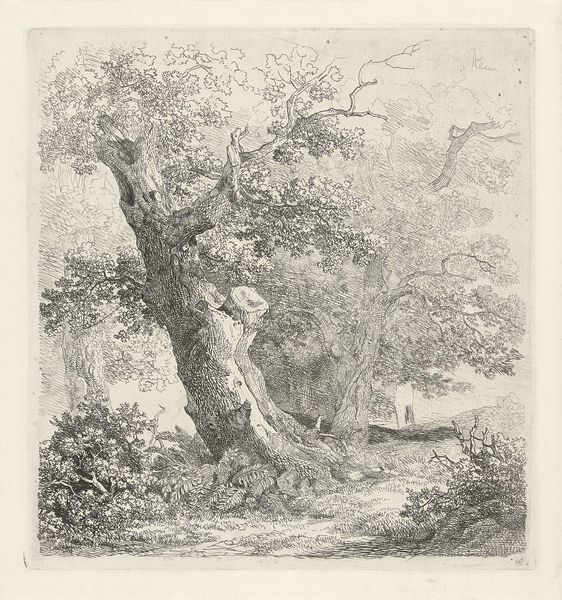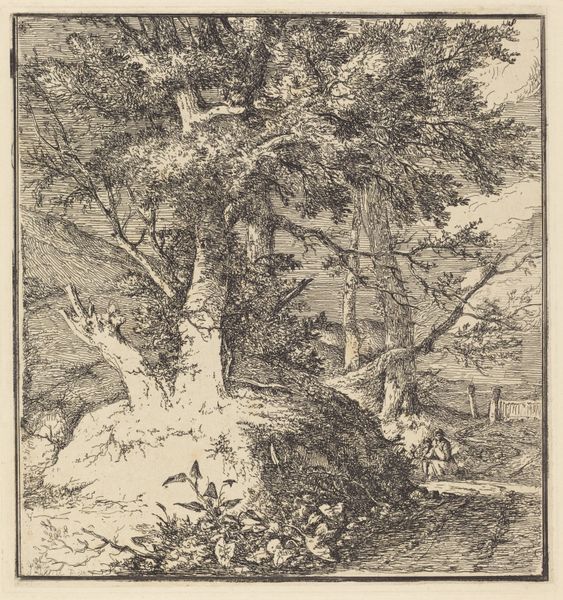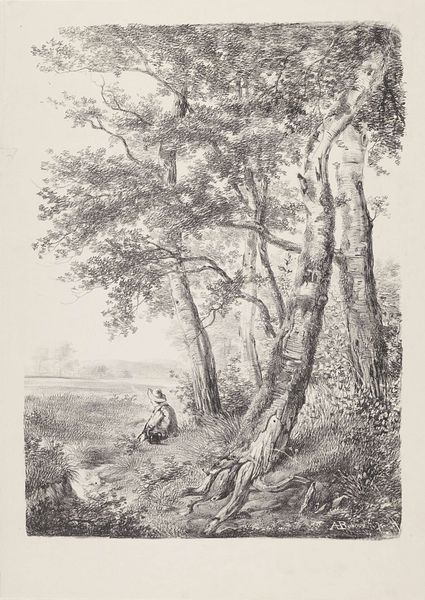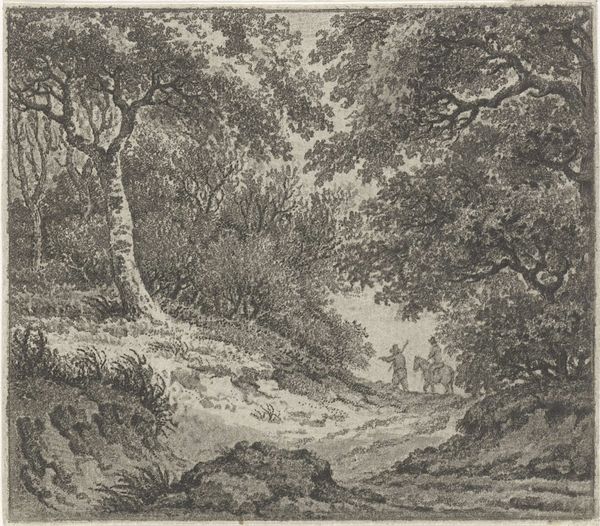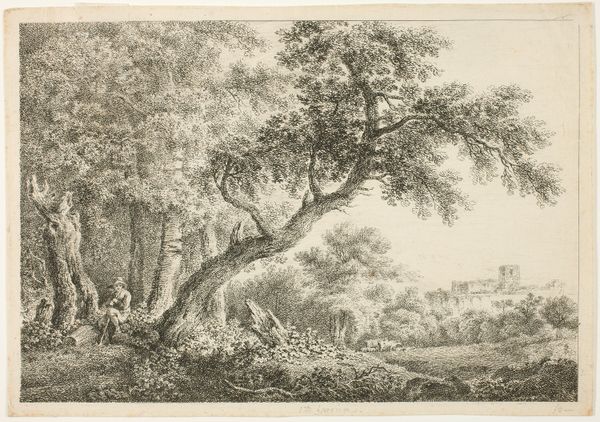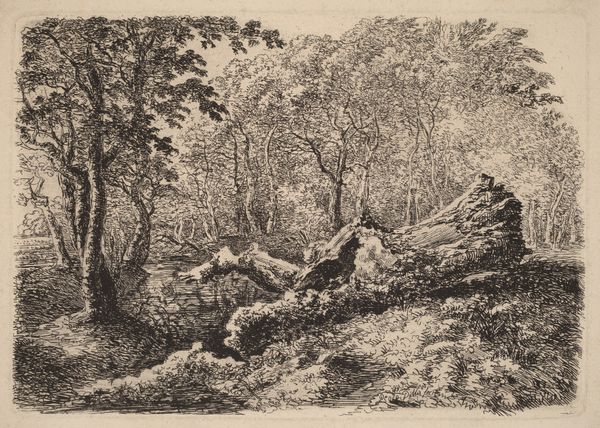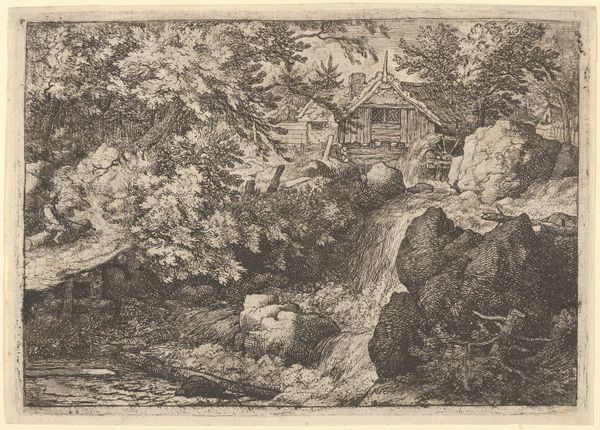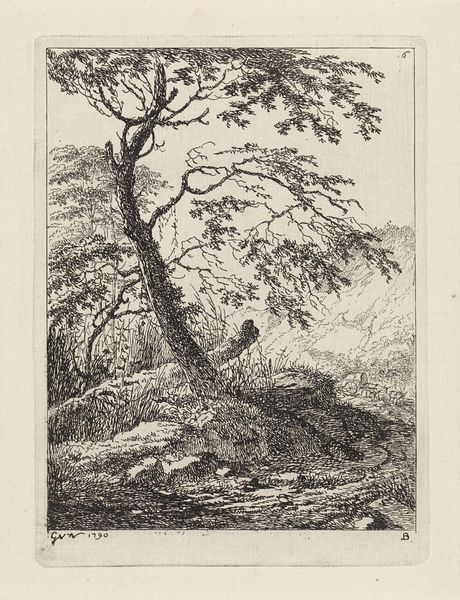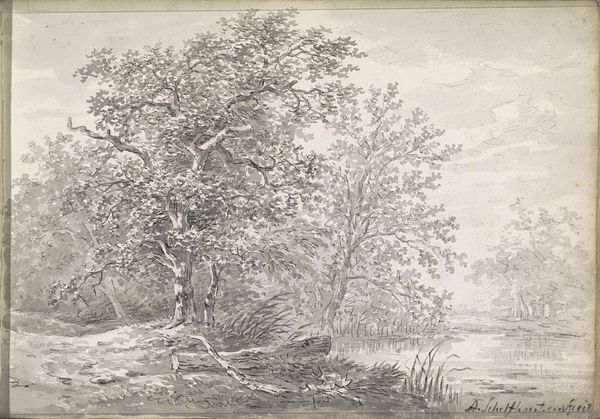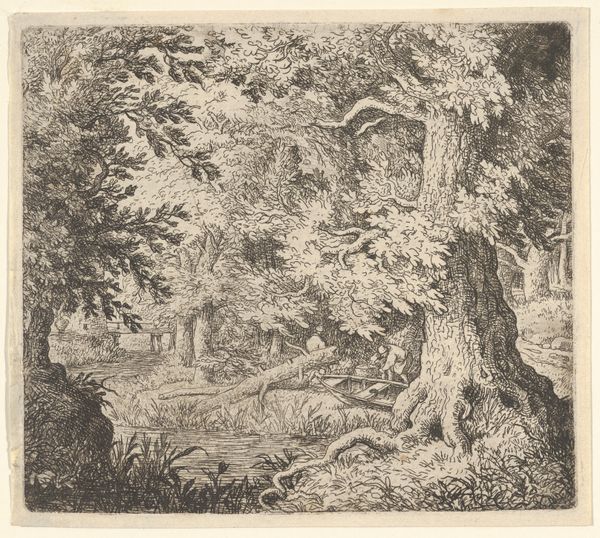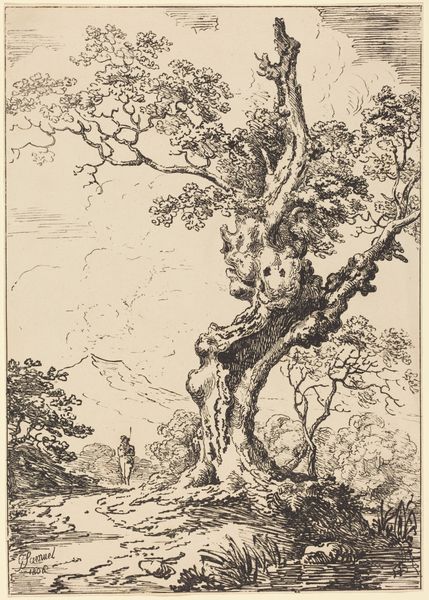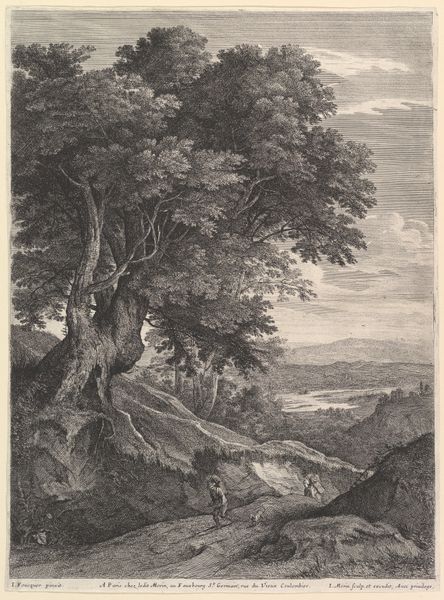
drawing, pencil
#
drawing
#
pencil sketch
#
landscape
#
romanticism
#
pencil
#
pencil work
Dimensions: height 237 mm, width 235 mm
Copyright: Rijks Museum: Open Domain
Curator: Ah, here we have "Boom in een landschap," or "Tree in a Landscape," created in 1848 by Remigius Adrianus Haanen. The medium is pencil on paper, giving it a wonderfully detailed, almost dreamlike quality. Editor: My first impression is one of quiet observation. It has a stillness that borders on melancholy, the single, aged tree dominating the scene. There’s an emotional depth I find intriguing. Curator: Absolutely. The way Haanen uses pencil, it becomes more than just a drawing tool. It allows him to articulate the rough texture of the tree bark and the softness of the foliage with such precision. Think about the societal conditions of 1848— a year of revolutions across Europe. What relationship might exist between political upheaval and the almost reverent focus on the natural world? Editor: I see the gnarled tree as a potent symbol. Perhaps it represents endurance, resilience in the face of change. Its weathered state hints at a long history, mirroring the stories and memories a landscape holds. The detail, though delicate, almost speaks of hidden meanings layered beneath what we simply observe as nature. Curator: And there is a conscious artifice here. Haanen is not merely rendering the observed. The arrangement, the contrasts of light and shadow— it's meticulously crafted to evoke a certain feeling, almost theatrical. Editor: It is theatrical, yet intensely private. Haanen invites us into the forest's interior to ponder more than the landscape's literal form. The artist, via close looking, wants us to imagine. Curator: He brings into focus the physical labour inherent in drawing; the skill in rendering the forms, to convey this emotion, speaks volumes. Editor: Looking closely, one also wonders if the artist is signaling us toward our place in that world: are we part of the tree, or distant and separate from it? I suspect the symbols change in each viewing. Curator: Thinking of labor, this piece seems almost a rebuttal to mass production taking root at the time. Editor: Agreed. This image invites reflection, perhaps in the artist's own time and certainly today. Thank you for sharing that lens. Curator: It seems a world away, yet present. Thank you for providing a different point of view on that world.
Comments
No comments
Be the first to comment and join the conversation on the ultimate creative platform.
